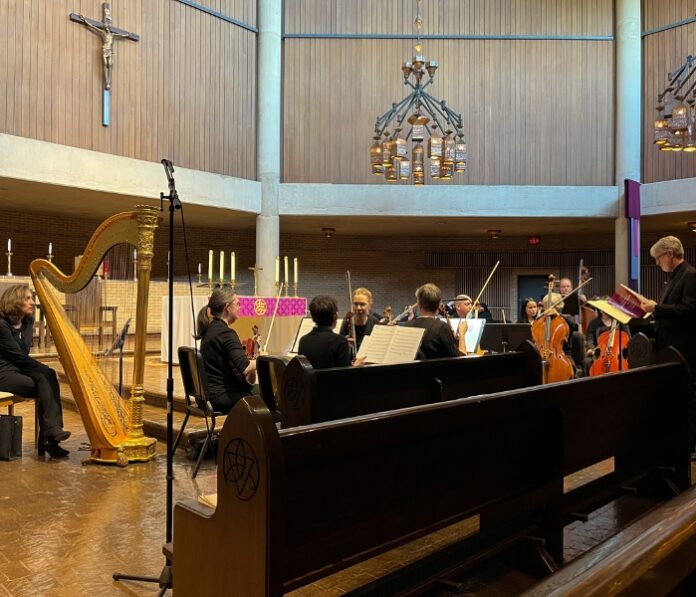Psalm 150:1-5 reads, “Praise the LORD! Praise God in his sanctuary; praise him in his mighty heavens! Praise him for his mighty deeds; praise him according to his excellent greatness! Praise him with trumpet sound; praise him with lute and harp!
“Praise him with tambourine and dance; praise him with strings and pipe! Praise him with sounding cymbals; praise him with loud clashing cymbals!” This Psalm describes the beauty of music, and how when celebrating God, music heightens such a celebration to even more divine means.
This Psalm best relates to the impeccable performance put on by the University of Dallas Chorale and the Texas Camerata, on the evening of Apr. 8, at the Church of the Incarnation. The groups performed two beautiful pieces inside the church that evening, Faure’s Requiem and the Cantique de Jean Racine.
In the church at 7:00 P.M. that Tuesday evening, the mood was peaceful, yet anticipatory, as people packed in to watch the performance. Alongside the singers, a range of instruments were set up, including brass instruments and stringed instruments.
Once the performance started, everyone in the crowd, including myself, seated in the back, leaned in excitedly with open ears. All of the performers’ voices sounded impeccably trained, and the power they were able to channel through their singing was unparalleled.
The synchronization of the singers, watching them perfectly time and harmonize their different tones, was amazing to witness in person. The choir of voices, alongside the wonderfully trained musicians, transformed the entire church with their beauty.
The two pieces that the musical ensembles performed were Faure’s Requiem and the Cantique de Jean Racine. Gabriel Faure was one of the most prominent French composers of the 20th Century, most known for his compositions featuring the organ and piano.
Requiem is a piece specifically made for the shortened Catholic Mass for the Dead. The themes most present in the piece are those of heavenly rest and achieving peace after passing. The Requiem is mostly sung in Latin, but the Kyrie is in Greek, and the mix between the two ancient languages adds multiple layers within the performance.
The next performance was Cantique de Jean Racine, which Faure composed at age 19 for a compositions competition in Paris, winning him first prize. Faure’s experience in composing church music lended itself to this specific work. This piece is meant to be performed together with Requiem, and the most modern performances feature the two in partnership.
In the end, the chorale performance at the church was showstopping, and it was lovely to sit down and experience their vocal talents firsthand. Kudos to the performers, musicians, and conductor for the amount of effort and time that was put into this performance.
Reflecting back on how much I enjoyed this show makes me excited to see what’s next in store for the U.D. Chorale!
